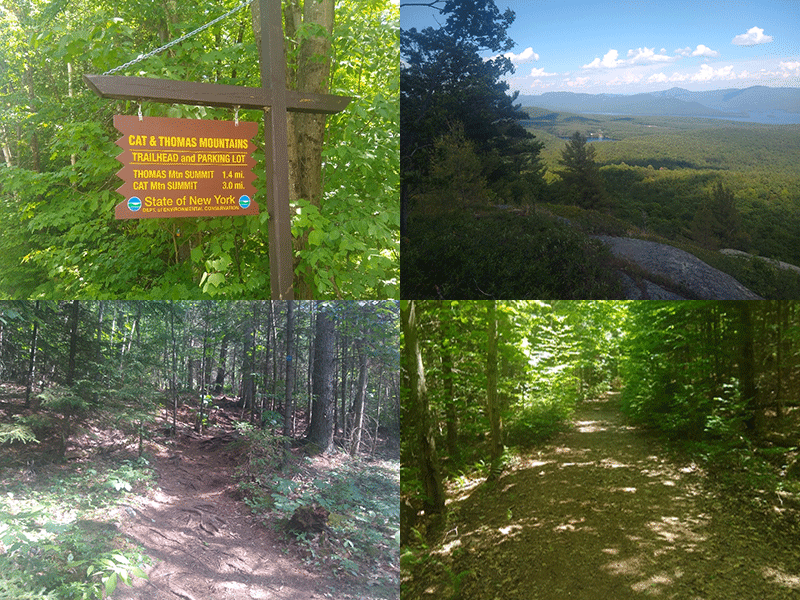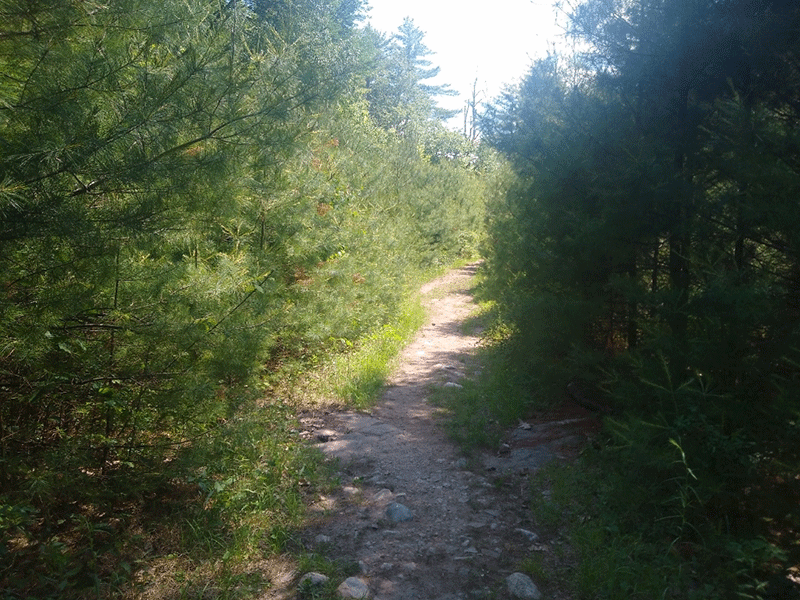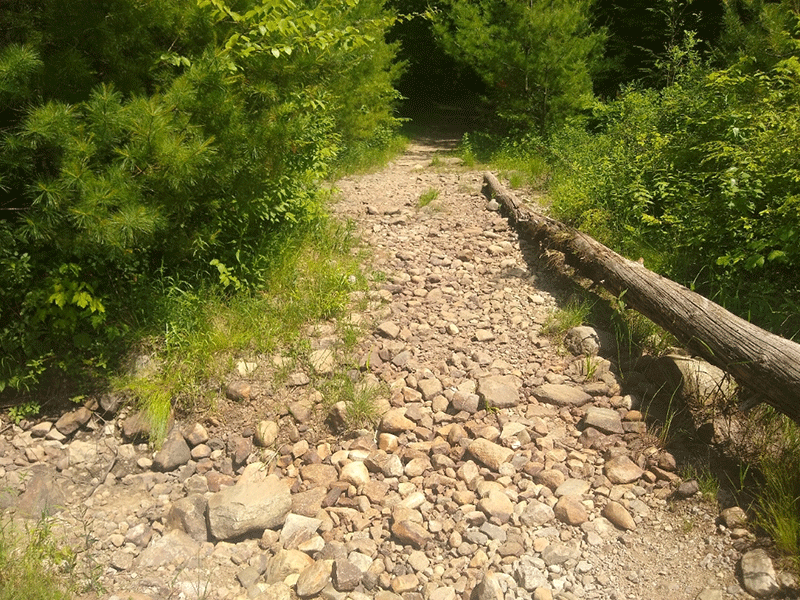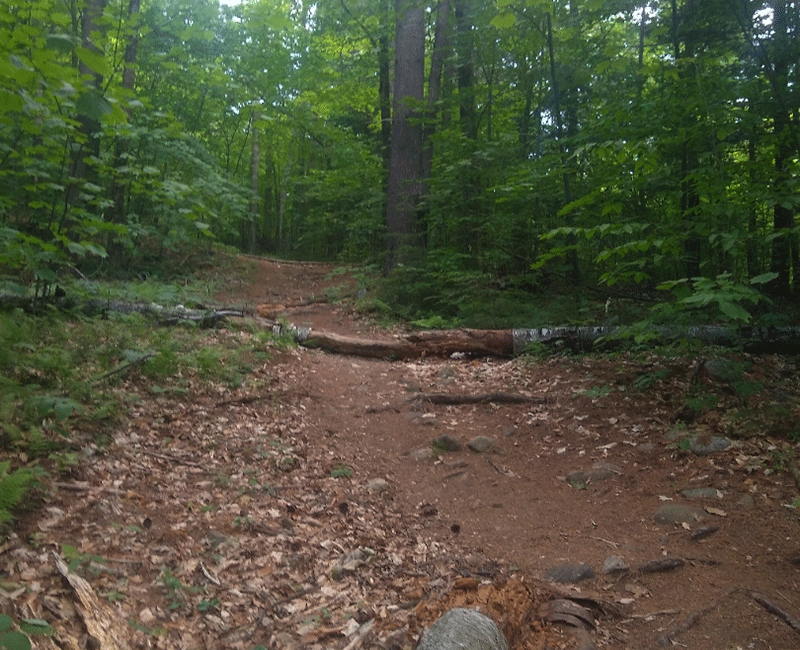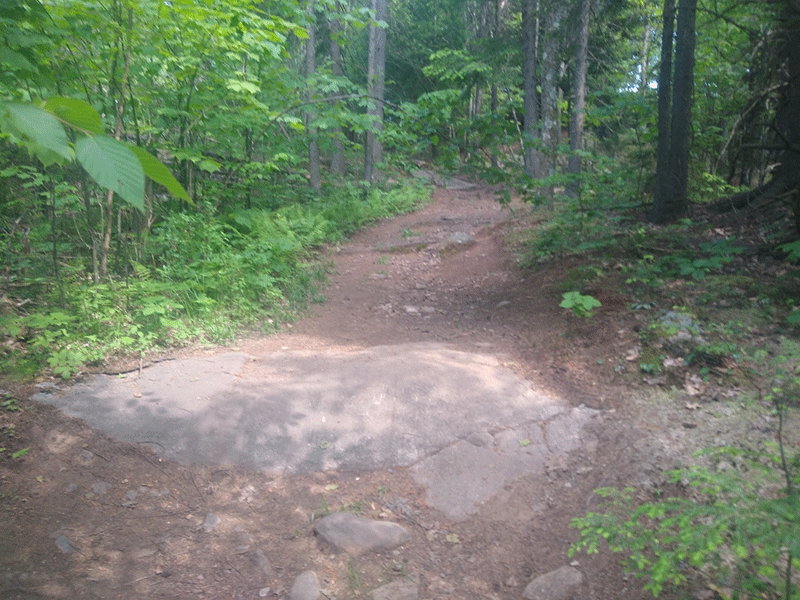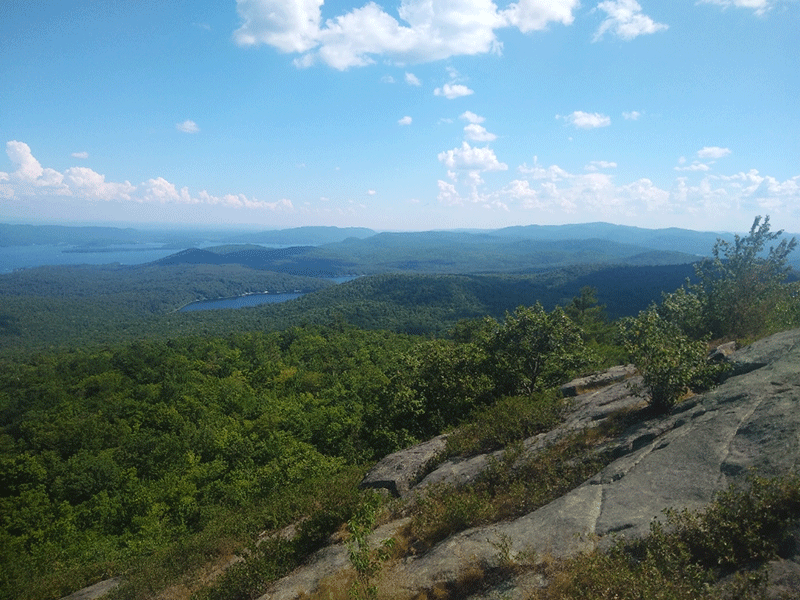Cat Mountain is an easy going 3-mile hike in the mountains west of Lake George above Bolton Landing
Cat Mountain
3 miles (6 miles round trip)
Bolton, Warren County
Southern Adirondacks
Hiking, Snowshoeing, Cross-country skiing
Hike Up Cat Mountain
The hike up is an easy hike in the mountains overlooking Lake George. Cat Mountain is a part of the Lake George Wild Forest near Bolton Landing, in Warren County. The trailhead can be accessed east of Route 87, just south of County Route 11 on Valley Woods Road. The trail is 3 miles in each direction, mostly rather flat with small inclines and declines only until the very last stretch that leads to the summit. The trail to Cat Mountain starts at the same trailhead as the trail to Thomas Mountain, which is slightly shorter. The Cat Mountain Trail passes a small pond and crosses through varied forests before reaching a stunning view at the summit.
The Cat Mountain Hiking Trail
The trail begins at a parking area off of Valley Woods Road. It passes by a roadblock and continues along an old road, past the trail register, and continues south for three miles. The vast majority of the trail is moderately flat, with only a couple of small slopes to navigate. About halfway to the base of Cat Mountain, the trail passes through a stretch lined with young pine trees, and then declines and passes by a small pond.
Shortly after this pond, there is a junction, and the Cat Mountain trail continues to the right while the road continues forward through the forest. At this point, the incline begins, and at points, the trail is steep and difficult. As the trail continues upwards, there are a couple of junctions. The official trail splits off from the wider, washed-out old road, and crosses over it once, but hikers can reach the summit either way relatively easily, and the distance is comparable on both routes. If hikers choose to take the road, there may be some back sections and blowdown because it is not officially maintained, but it does avoid some more difficult steep sections on the official trail.
The Summit of Cat Mountain
Near the top of the mountain, the forest shifts to coniferous in a small area around the summit. Soon after that, hikers will reach the summit and viewpoints. There are a couple of large, rocky outcroppings for seating, and a small fire pit at one of them. The view reaches from the Tongue Mountain Range and Montcalm Point to the north, as well as much of Lake George, to much more distant mountains to the southeast. The summit area is open and comfortable, with low-bush blueberries nearby in the right season.
The return trip is simple, although the steep downhill section at the start has a few slippery, treacherous spots. After reaching the base of Cat Mountain, the trail is relatively flat, although there are a few uphill sections that may seem more daunting on the hike out.
This hike is only moderately difficult, with the tough section concentrated at the end of the trail, and appropriate for anyone who can walk the full six miles and is comfortable with some steepness. If length is an issue, the trail to Thomas Mountain splits off from the same base trail early on, anyone daunted by the extra couple of miles to Cat could take a turn early and head up Thomas Mountain instead.
Click here to download a map and trail directions for Cat Mountain.
When You Hike Make Sure to Practice “Leave No Trace” to be Prepared and to Protect the Forest Preserve
Please follow “carry in, carry out” rules for all trash and follow all other Leave No Trace principles when hiking in the public Forest Preserve and other wild areas. The seven Leave No Trace principles are: 1) Plan ahead and prepare; 2) Stay on hiking trails and camp at designated areas; 3) Dispose of human waste and trash properly; 4) Leave what you find; 5) Minimize campfires; 6) Respect wildlife; 7) Respect other hikers.
Educated hikers do not damage the environment.
Prepared hikers do not need search and rescue unless injured.
Winter Use: Cat Mountain is used for snowshoeing in the winter.



